
Juan Manuel Fangio, was an Argentine racing driver. Nicknamed El Chueco or El Maestro, he dominated the first decade of Formula One racing, winning the World Drivers' Championship five times.
The 1950 Formula One season was the fourth season of the FIA's Formula One motor racing. It featured the inaugural FIA World Championship of Drivers, as well as several non-championship races. The championship, which commenced on 13 May and ended on 3 September, consisted of six Grand Prix races, each held in Europe and open to Formula One cars, plus the Indianapolis 500, which was run to AAA National Championship regulations. Giuseppe Farina won the championship from Juan Manuel Fangio and Luigi Fagioli.
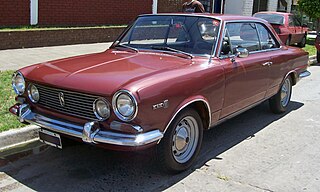
The IKA Torino, later renamed as Renault Torino, is a mid-sized automobile made by Industrias Kaiser Argentina (IKA) between 1966 and 1981, under an agreement with American Motors Corporation (AMC). The 1966 Torino was IKA's first national product. IKA was eventually bought out by Renault in 1975 to form Renault Argentina S.A.

Zakspeed is a motor racing team from Germany, founded in 1968 by Erich Zakowski and then run by his son Peter Zakowski. It is based in Niederzissen, Rhineland-Palatinate, around 25 kilometres (16 mi) from the Nürburgring circuit.
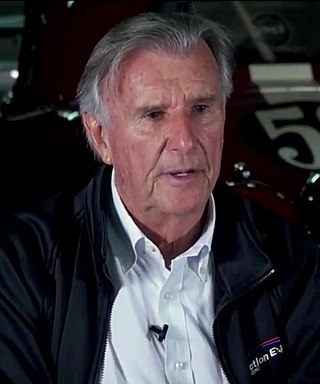
Wilson Fittipaldi Júnior was a Brazilian racing driver and Formula One team owner. He participated in 38 World Championship Formula One Grands Prix, debuting on 1 May 1972, scoring a total of three championship points. He ran the Fittipaldi Formula One team between 1974 and 1982. He also participated in numerous non-Championship Formula One races.

The Maserati 250F was a racing car made by Maserati of Italy used in '2.5 litre' Formula One racing between January 1954 and November 1960. Twenty-six examples were made.
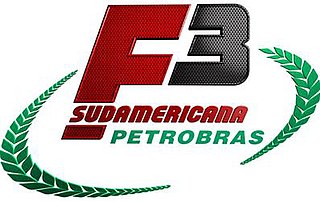
Fórmula 3 Sudamericana was a South American Formula Three championship. It was inaugurated in 1987 and primarily held races in Brazil and Argentina, with a small number of events held in other countries across the continent. Its most notable graduates include former Formula One drivers Nelson Piquet Jr., Ricardo Zonta and Christian Fittipaldi, four-time Indianapolis 500 winner Hélio Castroneves, and Champ Car champion and former F1 driver Cristiano da Matta. The series was replaced for 2014 by the Brazilian Formula Three Championship, which focuses on Brazilian circuits and drivers.
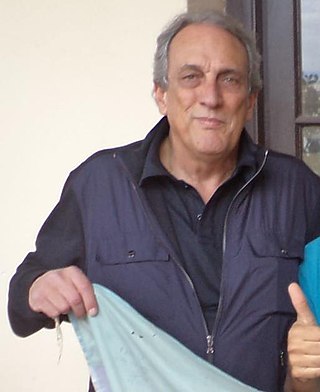
Juan María "Flaco" Traverso was an Argentine racing driver. He was a multiple champion in the most important championships in Argentina and raced in European Formula Two in 1979.

Gabriel Ponce de León is an Argentine racing driver. He has run in different series, with major success in Turismo Carretera and TC 2000.

Enrique Hector Scalabroni is an Argentinian race car designer, technical director, and team racing boss. He was employed by Dallara, Williams, Ferrari, Lotus and Peugeot Sport between 1985 and 2002, before setting up his own F3000 and GP2 team in 2003, BCN Competicion, which lasted till the end of 2008.

Autódromo Oscar Cabalén is a 4.045 km (2.513 mi) motorsports circuit located in Alta Gracia, Córdoba, Argentina. It has hosted events in the TC2000, Turismo Nacional and Formula Nacional Argentina series. The circuit is named in honour of racing driver, Oscar Cabalén (1928–1967).
The Fórmula Nacional Argentina, formerly known as Formula Renault 2.0 Argentina, Formula Renault 1.6 Argentina and Formula Renault Argentina, is an open wheel racing series founded in 1980. It is based in Argentina.
Throughout its history, the Italian auto manufacturer Maserati has participated in various forms of motorsport including Formula One, sportscar racing and touring car racing, both as a works team and through private entrants. Maserati currently competes in Formula E in partnership with the Monaco Sports Group (MSG) as Maserati MSG Racing.

Huayra Pronello Ford is an Argentine racing car built in 1969. It was designed by Heriberto Pronello for the official Ford Sports-Prototype team. The Huayra was powered by a heavily modified Ford Y-block V8, downsized to four liters, producing 430 hp, with four Weber 48/48 IDF carburetors. Driven by Carlos Pascualini and future competitive Formula One driver Carlos Reutemann, it was the fastest car in both qualifying and race in nearly all of Argentina's Turismo Carretera races in 1969.
Juan Manuel López, also known as Cochito Lopez is an Argentinian racing driver. He competed in the TC2000 series between 2001 and 2003 ; he also finished eleventh in both the 2005 and the 2006 Top Race V6 championships.

Victor Rubén Rosso is an Argentine international racing driver who competed in motorsports from 1978 to 2012. He has continued to be involved in motor sports as a Team Principal.
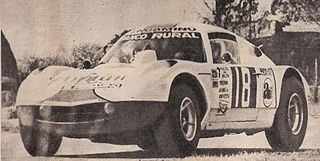
The Liebre Torino, also known as the Hare Torino, is a series of race cars that were manufactured between the 1960s and 1970s in Argentina, for use in the Turismo Carretera and Sport Prototipo Argentino categories. These are prototypes created by coachbuilder Heriberto Pronello and motorist Oreste Berta on the basis of the IKA Torino production car.

The Fast Chevrolet, nicknamed the Trueno Naranja, is a racing prototype, designed to run in the Turismo Carretera category, during the 60s. It is a car mounted on a handmade reticulated chassis and powered by a 250 cubic inches inline 6 Chevrolet engine. Although the reticulation that forms its chassis was designed by Pedro Campos, which was based on a Lotus Seven, it is recorded in the automotive records with the Chevrolet brand. It had been originally created by the Baufer bodybuilder as the Baufer Ford F-100 Prototype and its preparer was Horacio Steven. your pilot Carlos Pairetti was the one who obtained the 1968 Road Tourism championship with this machine. His name is a connotation of the fastback type design that the car has, while the nickname Thunder Orange, alluded to the color and the speed with which the car performed. From the 1968 championship, two Fast-Chevrolet units took part, the first being the car driven by Pairetti, while the second unit was a gold-painted Fast Chevrolet, which was driven by Oscar Espinosa Fangio. This second car was known by the pseudonym Trueno Dorado.
The Chevrolet prototypes were a series of vehicles that competed in Argentine motorsports presented by different preparers, who powered their machines with Chevrolet engines. The first of them was the revolutionary Chevitú, the creation of José Froilán González and which marked a turning point in Argentine motorsports. The most successful of them was the Trueno Naranja, created by Horacio Steven and champion in 1968, with Carlos Alberto Pairetti at the wheel.

The Baufer-Ford or Steven-Ford was a racing prototype designed and manufactured in Argentina by the defunct Baufer bodybuilder, and serviced by the preparer Horacio Steven to compete in Turismo Carretera. This prototype was created at the request of the official Ford Motor Argentina team, to face the IKA-Renault Torino, which the successful preparer Oreste Berta had presented in 1966, making the official IKA team debut. Ford's objective was to fight and hunt these cars prepared in Alta Gracia, in order to recover the leadership lost in 1966. With the regulatory change of 1967, which allowed the creation of racing prototypes at the pleasure and convenience of the preparers, the prototype devised had V8 engines from Ford F-100 trucks and was mounted on the chassis of a Ford T. This car was indistinctly known as Baufer-Ford for its creator body, or as Steven-Ford, for its preparer.

























